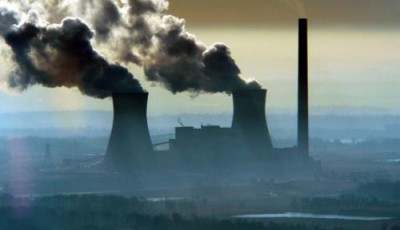Gas flaring grows as oil industry saves money
By Kieran Cooke
LONDON, 29 December, 2016 – Gas flaring figures are an indictment of the global oil and gas industry. In 2015, 147 billion cubic metres (bcm) of natural gas was flared at oil production sites around the world – up from 145bcm in 2014 and 141bcm in 2013.
That’s a waste of energy on a massive scale: according to the World Bank, if the gas flared was used for power generation it would be more than enough to provide the current annual electricity consumption of the whole of Africa.
Oil producers often prefer to burn off gas associated with oil extraction activities rather than invest capital in pipes and pumping stations to transport the gas to consumers.
Visible from space
Gas flaring is also a significant factor driving global warming. More than 16,000 gas flares at oil production sites around the world result in about 350 million tons of climate-changing CO2 being emitted into the atmosphere every year. The flares from numerous shale oil wells in the US can be seen from space.
The World Bank says flaring in northern areas of the globe is also a major source of black carbon or soot which when deposited on Arctic ice, accelerates melting.
The latest data on flaring has been released by the Global Gas Flaring Reduction Partnership, a Bank-led organisation made up of governments, oil companies and various international bodies.
“The oil and gas industry has to step up and acknowledge that it’s time to change the way they do business,” a Bank official told Climate News Network.
According to the figures – gathered by the Bank and the US National Oceanic and Atmospheric Administration (NOAA) from advanced satellite sensors – Russia is the largest gas flaring country, burning about 21 bcm annually, followed by Iraq (16bcm), Iran (12bcm), the US (12bcm) and Venezuela (9bcm).
“The oil and gas industry has to
step up and acknowledge that
it’s time to change the way
they do business”
In the run-up to the Paris conference on climate change in late 2015, a number of governments and oil and gas production companies agreed to an initiative designed to eliminate gas flaring by 2030.
ExxonMobil – the world’s biggest fossil fuel company – along with Chevron, another US-based giant of the industry, have so far not agreed to join the initiative.
Donald Trump, the US president-elect, who in the past has referred to climate change as a “hoax”, recently announced that Rex Tillerson, Exxon’s CEO, would be his candidate for Secretary of State.
Increases in gas flaring
Riccardo Puliti, the World Bank’s senior director for energy and extractive industries, says that while the recent increase in flaring is disappointing, more governments and companies are committed to reducing or stopping flaring altogether.
Between 2005 and 2011 flaring worldwide dropped by 20%. The Bank says Nigeria – once of the largest flaring countries – has reduced its burn-off of gas by 18% since 2013.
For many years Shell and other big oil companies have been accused of causing serious pollution through their oil extraction and flaring activities in Nigeria.
The price of natural gas has been falling in recent years thanks to new finds and the rise of the US oil and shale gas industry. A decline in global economic activity has been another factor driving down oil and gas prices. – Climate News Network








